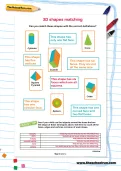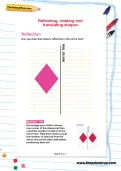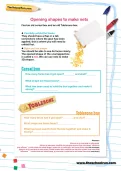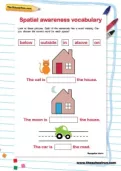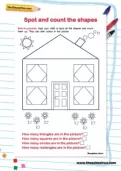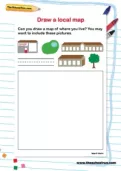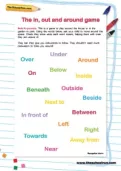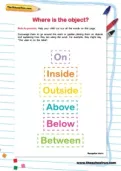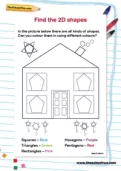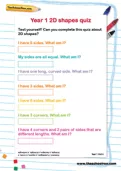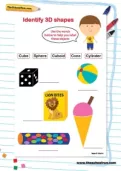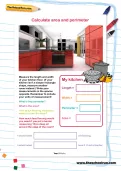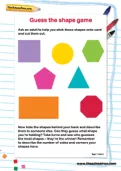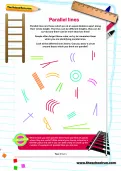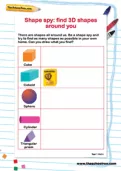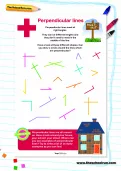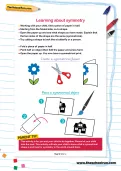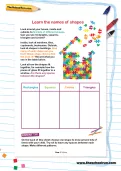Help your child learn and use the correct words when they are describing where things are. Is an object below, in or on another object?
or
Register to add to your saved resources
Already a subscriber? to view this content.
A game for children to play that encourages their ability to describe where objects are and give directions.
or
Register to add to your saved resources
This picture of a house is made up of loads of different shapes. Can your child spot them all and count them? A brilliant puzzle to help boost shape-recognition skills.
or
Register to add to your saved resources
Already a subscriber? to view this content.
Worksheet with pictures to encourage your child to draw a map of the place where they live.
or
Register to add to your saved resources
Already a subscriber? to view this content.
Your child will love this game, especially when it is their turn to boss you around! The aim is to practise using words such as below, under, around and inside and reinforce their meaning.
or
Register to add to your saved resources
An activity to do at home, consisting of cutting out the names of 3D shapes and then labelling relevant objects at home.
or
Register to add to your saved resources
Already a subscriber? to view this content.
In, on, over, under, inside, outside... all concepts your child will learn in their Reception year. Help reinforce their understanding by labelling things around the house as part of this activity.
or
Register to add to your saved resources
Already a subscriber? to view this content.
A picture of a house incorporating various 2D shapes for children to colour in given colours.
or
Register to add to your saved resources
Which shape am I? Your child can use the clues on this fun quiz sheet to identify the main 2D shapes. Answers are provided.
or
Register to add to your saved resources
A worksheet with names of 3D shapes to match to pictures.
or
Register to add to your saved resources
Already a subscriber? to view this content.
This activity gives your child practice at identifying a series of regular and irregular five- and six-sided shapes.
or
Register to add to your saved resources
Already a subscriber? to view this content.
This activity encourages your child to measure your kitchen at home and then calculate its perimeter and area.
or
Register to add to your saved resources
Already a subscriber? to view this content.
A game to make and play! Help your child to stick and cut out the shapes and then take turns to describe a shape for the other to guess. Start with three or four shapes, and progress as your child becomes more and more skilled. Brilliant for helping children identify the main features of 2D shapes
or
Register to add to your saved resources
Already a subscriber? to view this content.
This download explains what parallel lines are and encourages children to think about which examples fit the description.
or
Register to add to your saved resources
Already a subscriber? to view this content.
Can your child be a shape spy? Find common household items in these common 3D shapes with this activity sheet.
or
Register to add to your saved resources
Already a subscriber? to view this content.
This worksheet explains what perpendicular lines are. Children then need to choose which lines are perpendicular from a range of examples.
or
Register to add to your saved resources
Already a subscriber? to view this content.
This Year 2 maths download will help your child to recognise reflective symmetry in familiar 2D shapes and patterns.
or
Register to add to your saved resources
Already a subscriber? to view this content.
This Year 1, Key Stage 2 maths download will help your child identify shapes in the world around them, as well as introducing the concept of tessellating shapes.
or
Register to add to your saved resources
Already a subscriber? to view this content.
A practical activity for measuring right angles. Children will become more confident at recognising right angles with this exercise.
or
Register to add to your saved resources
Already a subscriber? to view this content.
This worksheet will enable children to differentiate between right angles, angles smaller than a right angle, and angles larger than a right angle. A fun visual activity.
or
Register to add to your saved resources
Already a subscriber? to view this content.
